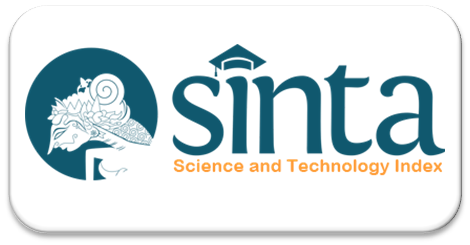The Relationship between Self-Awareness Behavior and Nurses' Ability to Implement Patient Safety
DOI:
https://doi.org/10.35960/vm.v17i1.1359Keywords:
Self-Awareness Behavior, Patient SafetyAbstract
The nurse's self-awareness behavior and ability play a very important role in patient safety. The nurse's behavior and ability play a very important role in patient safety performance. The purpose of this study was to determine the relationship between nurses' self-awareness behavior in carrying out patient safety at Dr. Moewardi Surakarta Hospital. This research is a quantitative research with a cross sectional design. The sample in this study amounted to 99 nurses. The study was conducted in January 2024 at Dr Moewardi Hospital Surakarta. The research instrument uses questionnaires developed by researchers. The results showed that the majority of respondents who had good self-awareness behavior also had good patient safety implementation as many as 71 people (80.7%). Meanwhile, respondents who had poor self-awareness behavior also had poor patient safety implementation as many as 6 people (2.6%) and obtained a significance value of 0.026. The results of the study can be concluded that there is a relationship between nurses' self-awareness behavior and patient safety at Dr. Moewardi Surakarta Hospital.
References
Abu Lebda, H., Malak, M. Z., & Hamaideh, S. H. (2023). Self-awareness, empathy, and patient-centered care among critical care nurses in Jordan. Psychology, Health and Medicine, 28(9), 2764–2775. https://doi.org/10.1080/13548506.2022.2094427
Arruum, D., Novieastari, E., Indonesia, U., & Barat, J. (2019). Nurses’ Barriers to Incident Reporting in Patient Safety Culture: A Literature Review. Indonesian Journal of Global Health Research, 2(4), 385–392. https://doi.org/10.37287/ijghr.v2i4.302
Handayani, Y. V, & Kusumapradja, R. (2018). Pengaruh Motivasi Kerja Perawat Terhadap Penerapan Program Keselamatan Pasien Di Unit Rawat Inap Rumah Sakit X Tangerang Selatan. Hospitalia, 1(1), 67–80.
Herlina Lin. (2019). Hubungan Motivasi Dengan Kepatuhan Perawat Dalam Pelaksanaan Identifikasi Pasien Sebagai Bagian Dari Keselamatan Pasien Di Ruang Rawat Inap. Jurnal Kesehatan, 10(1), 19–24.
Herna Hartati, Ida Faridah, & A.Y.G Wibisno. (2022). Pengaruh Pengetahuan, Sikap Dan Penerapan Mahasiswa Praktikan Tentang Keselamatan Pasien Terhadap Tingkat Kejadian Keselamatan Pasien. Jurnal Ilmiah Kedokteran Dan Kesehatan, 2(1), 39–45. https://doi.org/10.55606/klinik.v2i1.774
Huriati, H., Shalahuddin, S., Hidayah, N., Suaib, S., & Arfah, A. (2022). Quality of service for patient safety in hospitals. Forum Ekonomi, 24(1), 186–194. https://doi.org/http://dx.doi.org/10.29264/jfor.v24i1.10572
Ningsih, N. S., & Endang Marlina. (2020). Pengetahuan Penerapan Keselamatan Pasien (Patient Safety) Pada Petugas Kesehatan. Jurnal Kesehatan, 9(1), 59–71. https://doi.org/10.37048/kesehatan.v9i1.120
Salawati, L. (2020). Penerapan Keselamatan Pasien Rumah Sakit. AVERROUS: Jurnal Kedokteran Dan Kesehatan Malikussaleh, 6(1), 98. https://doi.org/10.29103/averrous.v6i1.2665
Tampubolon, L. F., Waruwu, M. A., Sinurat, S., & Tumanggor, L. S. (2022). Hubungan Kesadaran Perawat Dengan Penerapan Patient Safety Di Ruang Internis Rumah Sakit Santa Elisabeth Medan. Elisabeth Health Jurnal, 7(1), 17–21. https://doi.org/10.52317/ehj.v7i1.399
Viken, B., Solum, E. M., & Lyberg, A. (2018). Foreign educated nurses’ work experiences and patient safety—A systematic review of qualitative studies. Nursing Open, 5(4), 455–468. https://doi.org/10.1002/nop2.146
Wardani, N., Situmorang, T. H., & Januarista, A. (2023). Hubungan Pengetahuan dan Sikap Perawat Terhadap Perilaku Penerapan Sasaran Keselamatan Pasien ( SKP ) di ICU dan ICVCU. Gudang Jurnal Multidisiplin Ilmu, 1(September), 208–214.
Wiratmo, P. A., Karim, U. N., & Purwayuningsih, L. (2021). Hubungan Antara Pengetahuan Dan Sikap Perawat Mengenai Keselamatan Pasien Terhadap Penerapan Nursing Early Warning Scoring System (Newss). Journals of Ners Communitypatuh, 12(02), 232–244.
Downloads
Published
How to Cite
Issue
Section
License
Copyright (c) 2024 Titania Nur Rizkya, Supratman

This work is licensed under a Creative Commons Attribution 4.0 International License.
Submitted paper will be firstly reviewed by the editors to determine whether the paper meet the edition theme and submission guidelines. Papers which meet the theme and the guidelines will be assigned to selected reviewers for peer-reviews. Viva Medika: Jurnal Kesehatan, Kebidanan dan Keperawatan is a double blind peer-reviewed journal which involves reviewers based on their experties relevant to the topic of the paper. Final decision of paper acceptance is solely decided by the editors according to reviewers' comment.
Plagiarism and self-plagiarism are prohibited. Viva Medika: Jurnal Kesehatan, Kebidanan dan Keperawatan uses PlagiarismCheckerX and iThenticate to scan papers for detecting plagiarism. Thus, Appropriate citation and quotation should be used

.png)








